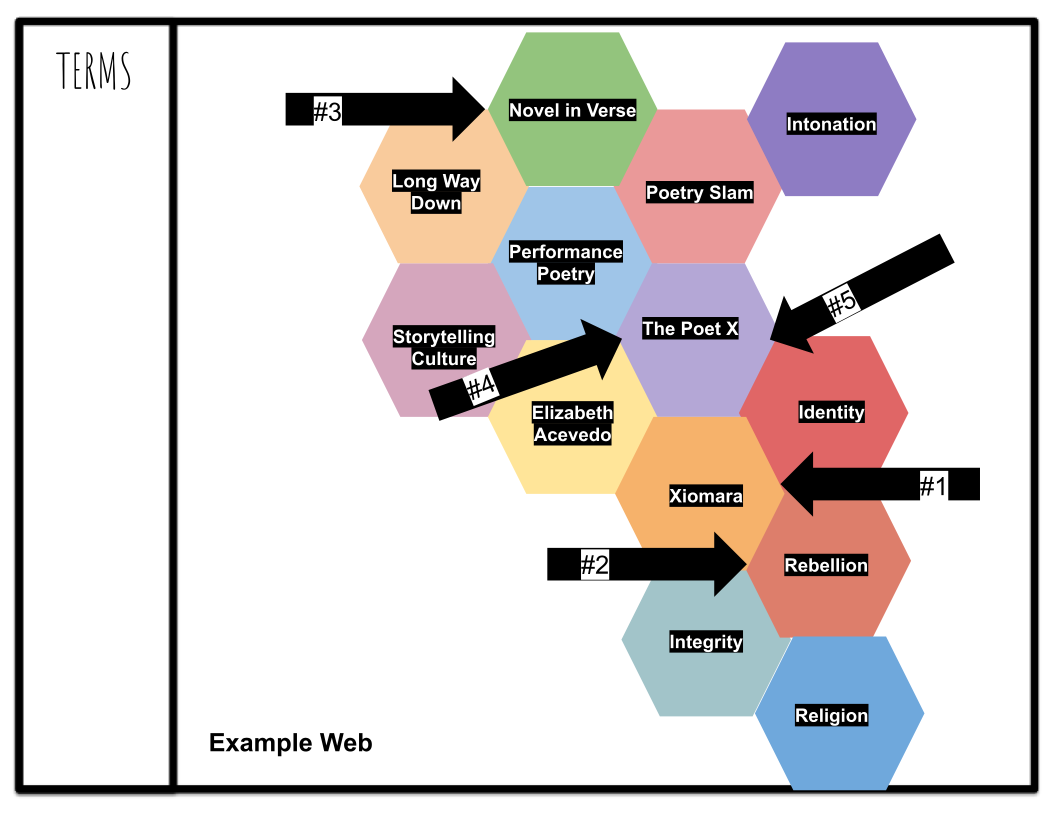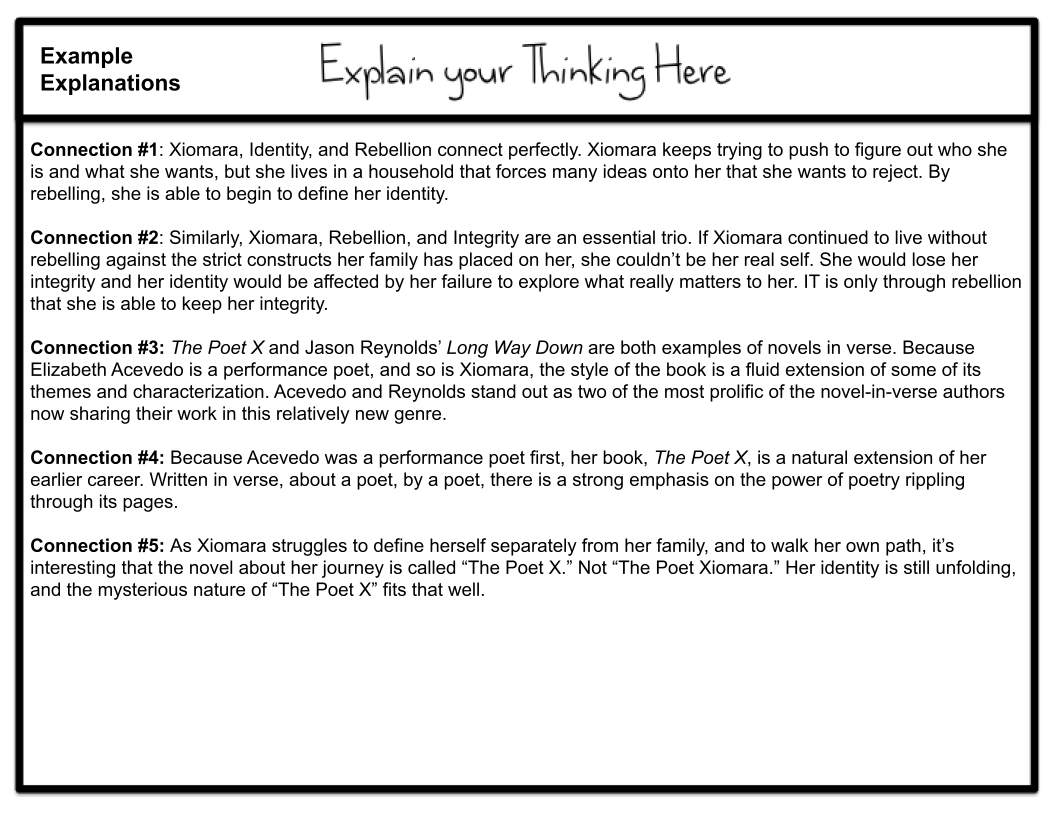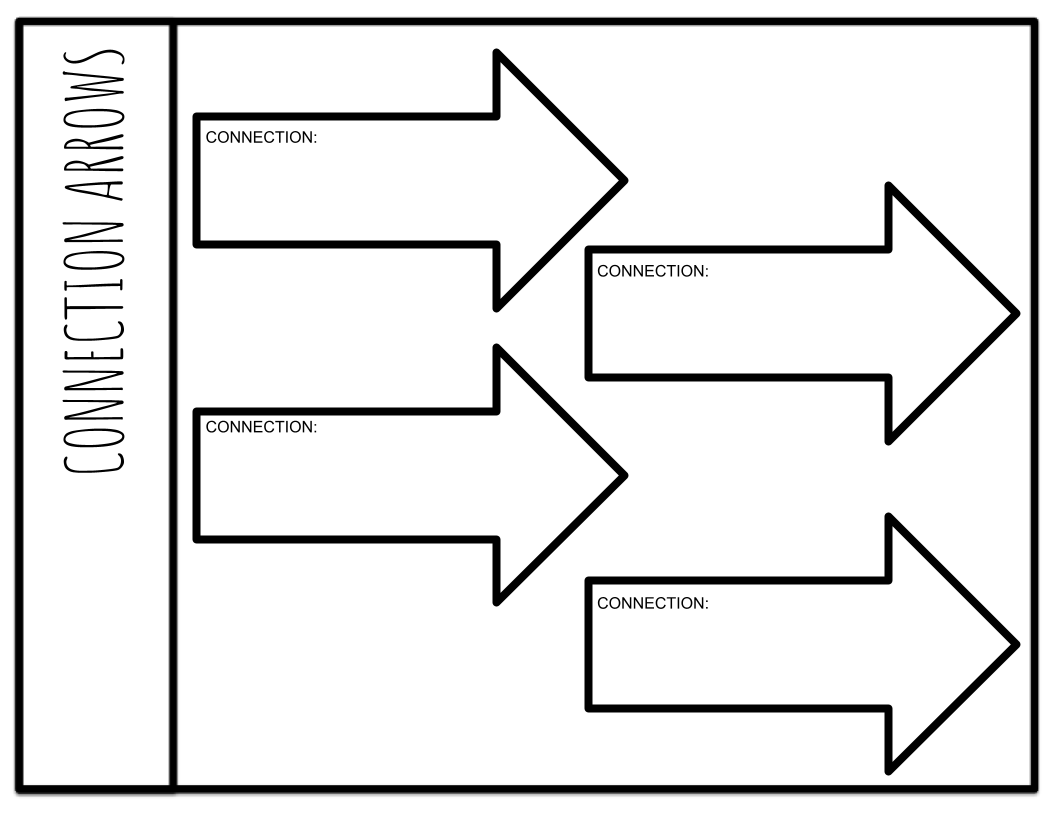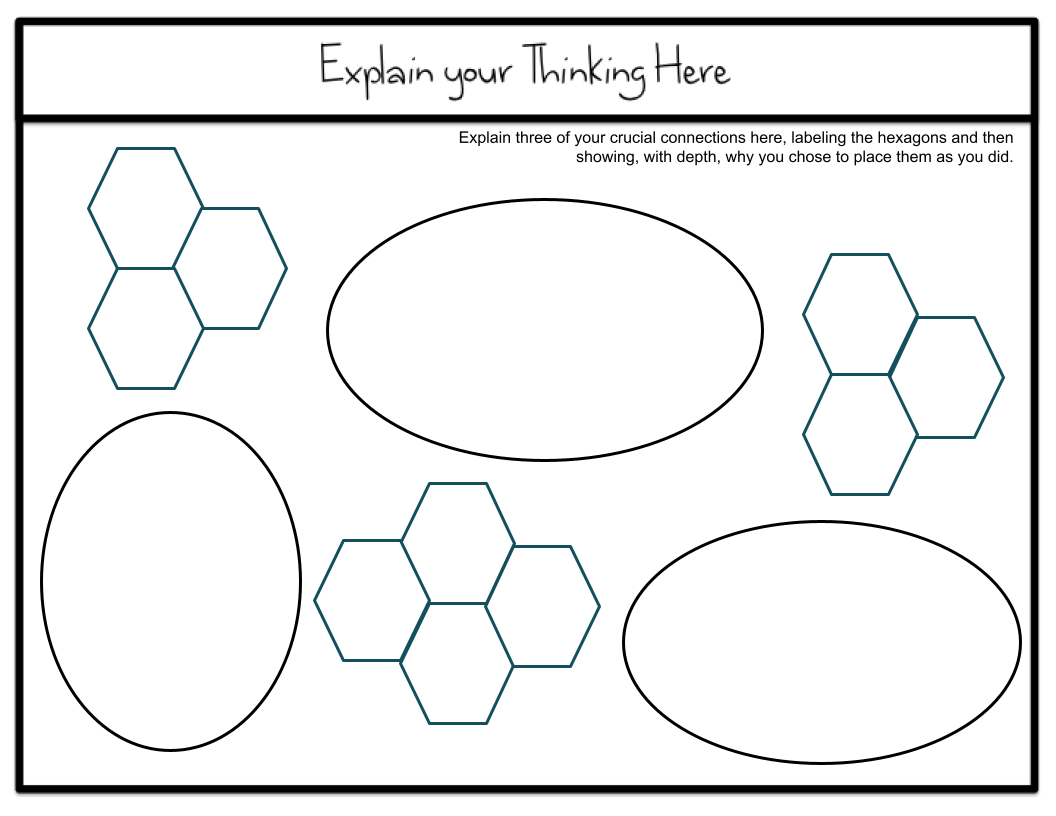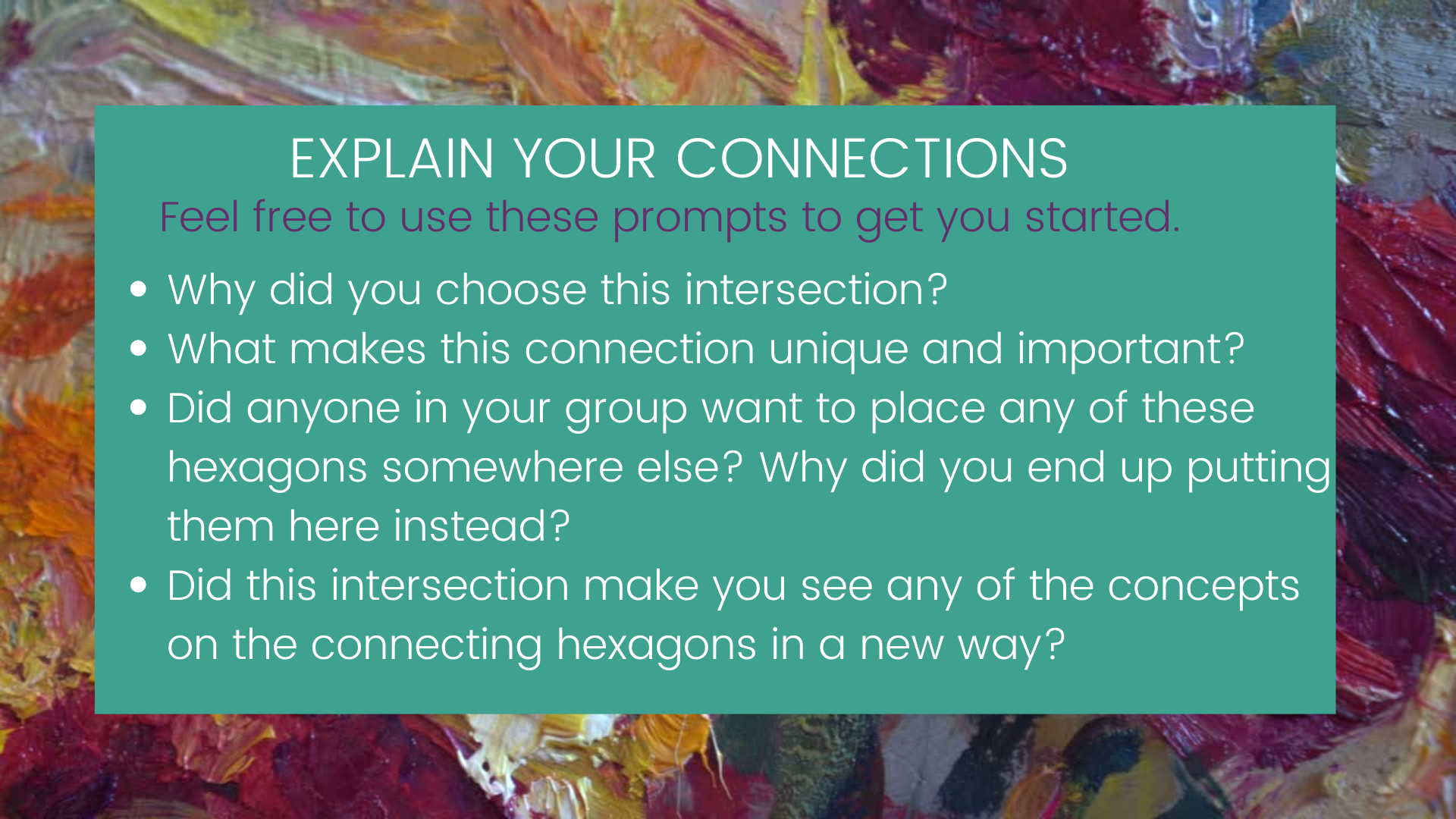
WELCOME TO DAY FOUR OF CAMP CREATIVE
Today we're talking about how to help kids explain their connections once they've made them. There are so many options!
Students might:
- Present a key connection back to the class
- Make a Flipgrid recording of their web and explain two key connections
- Write their connections directly onto their webs, using post-its, connection arrows, or the paper or whiteboard behind their web
- Write their explanations onto graphic organizers, handouts, or Google slides guiding them in their responses
